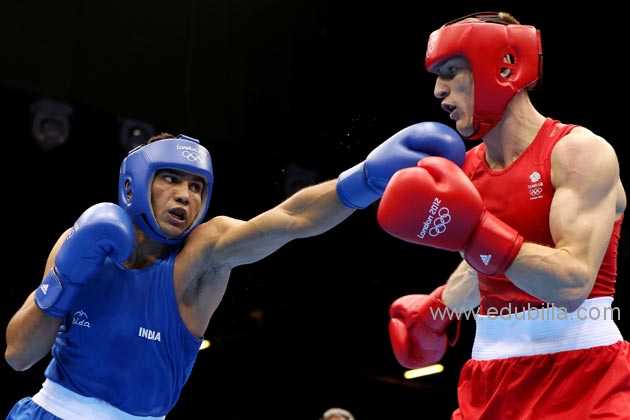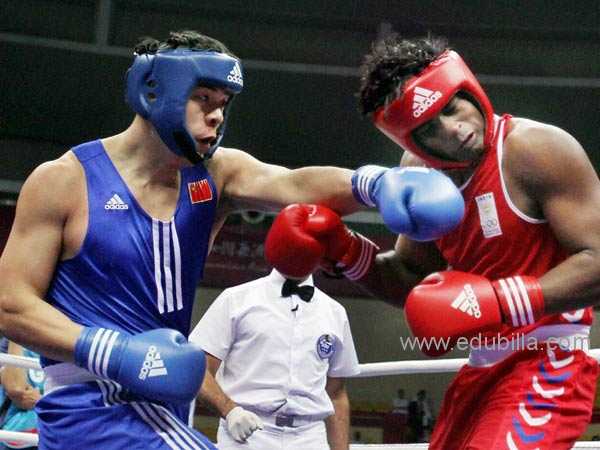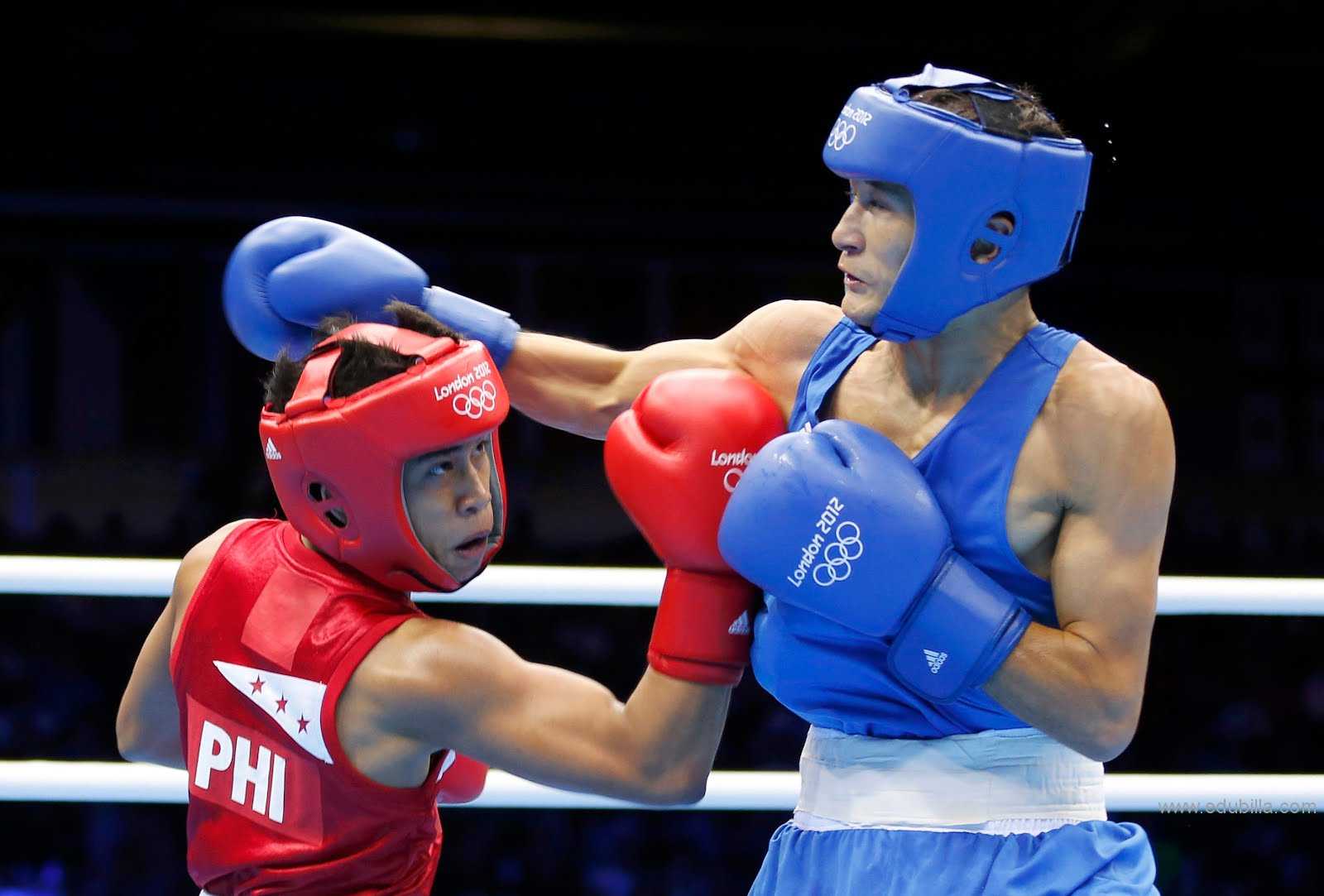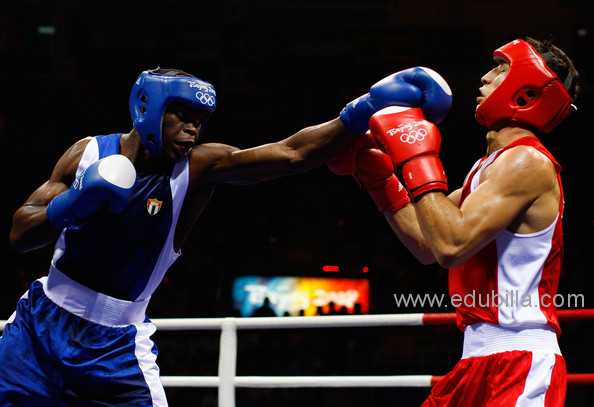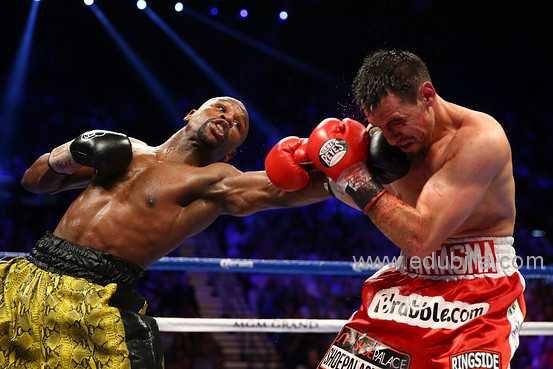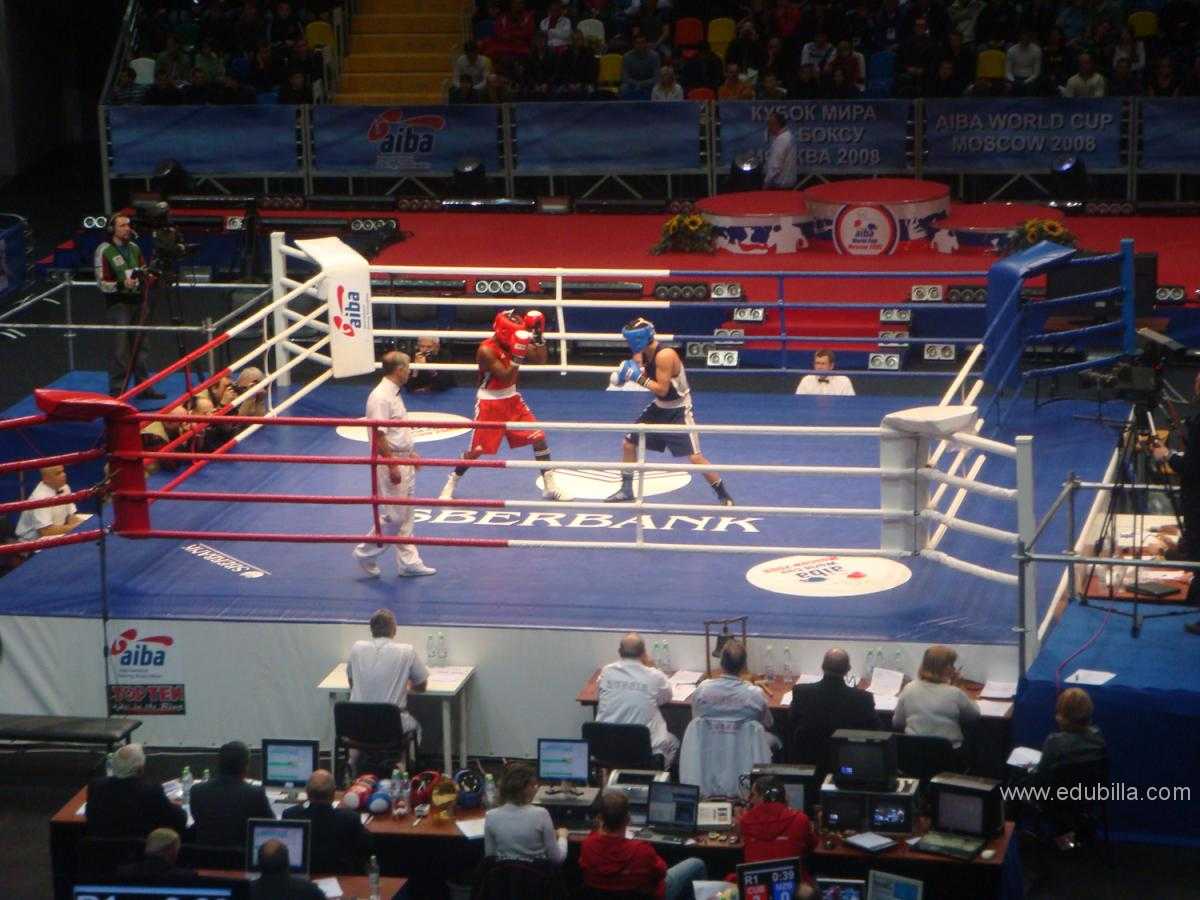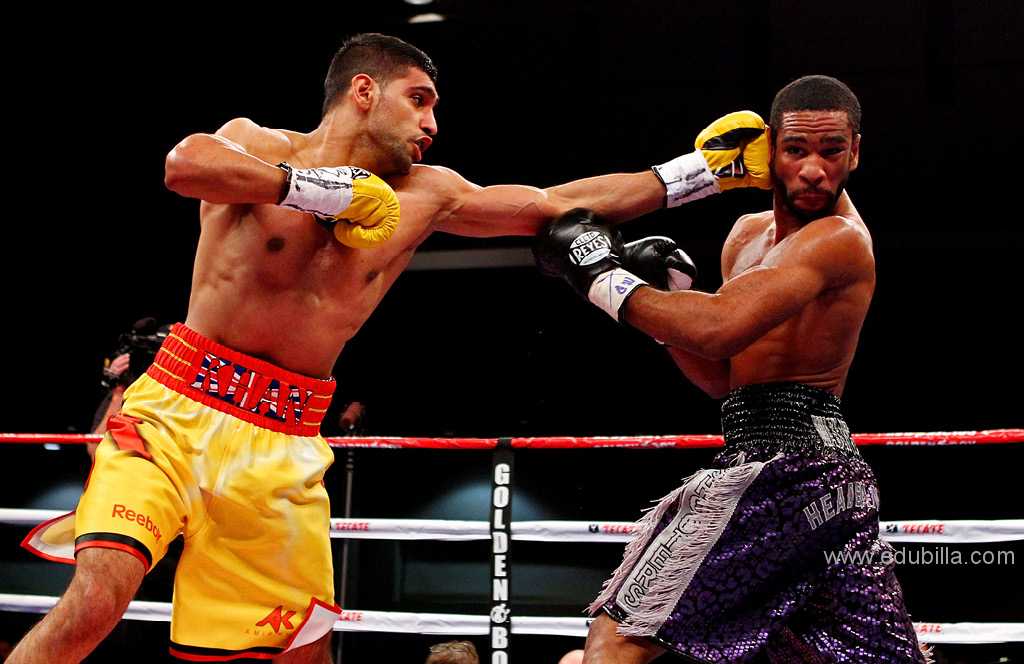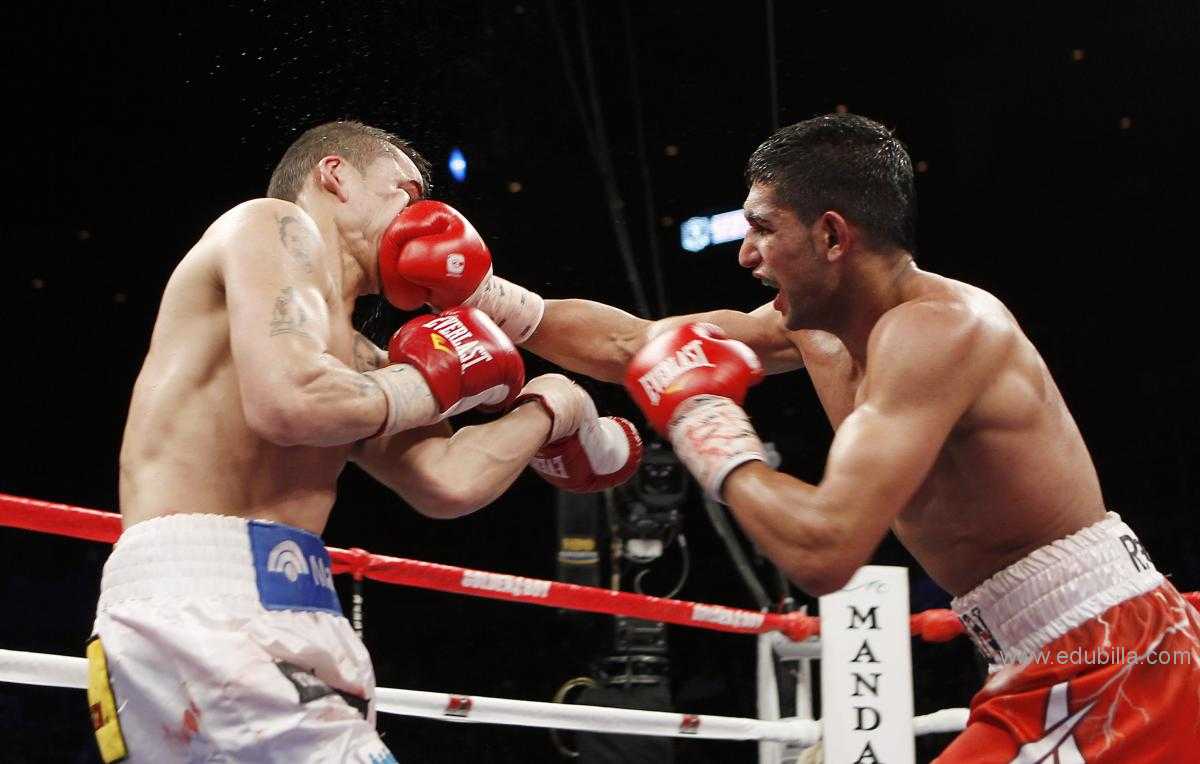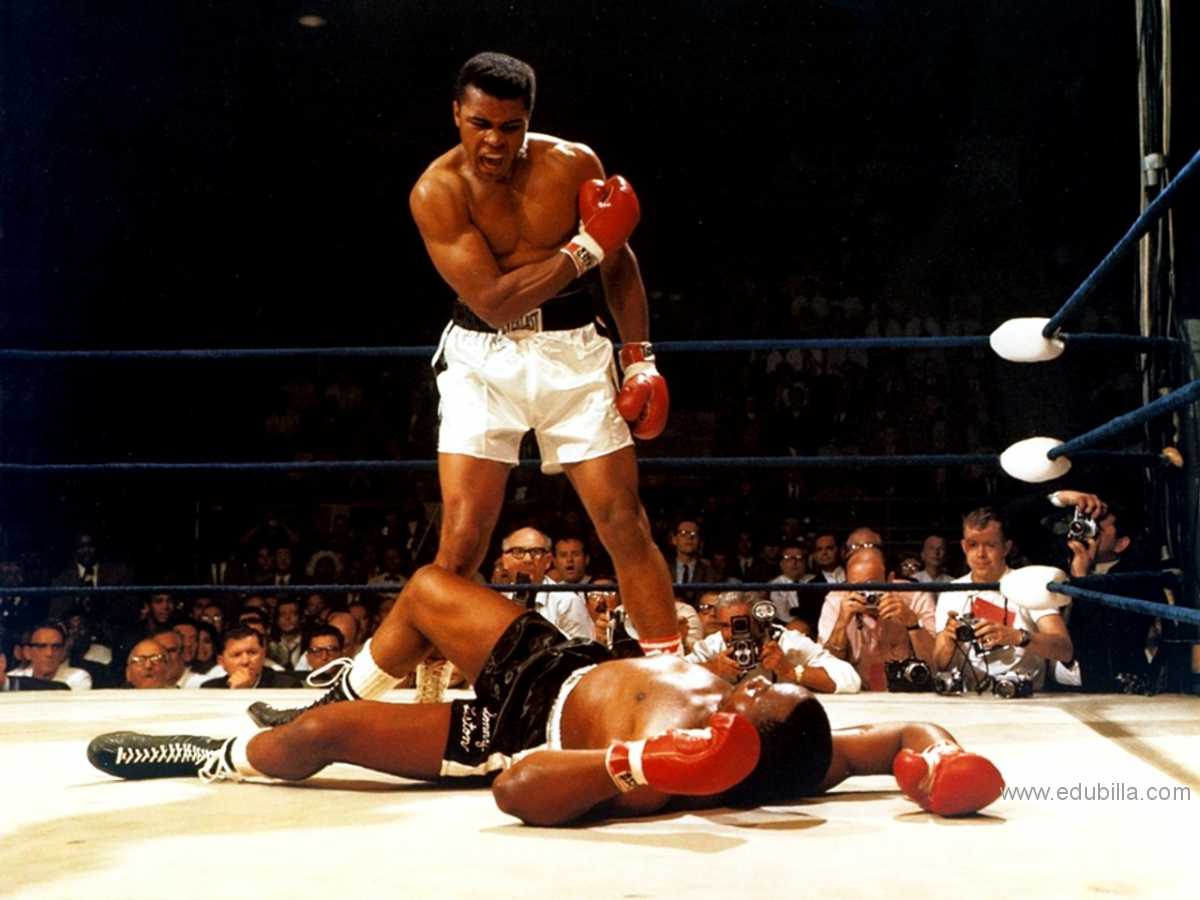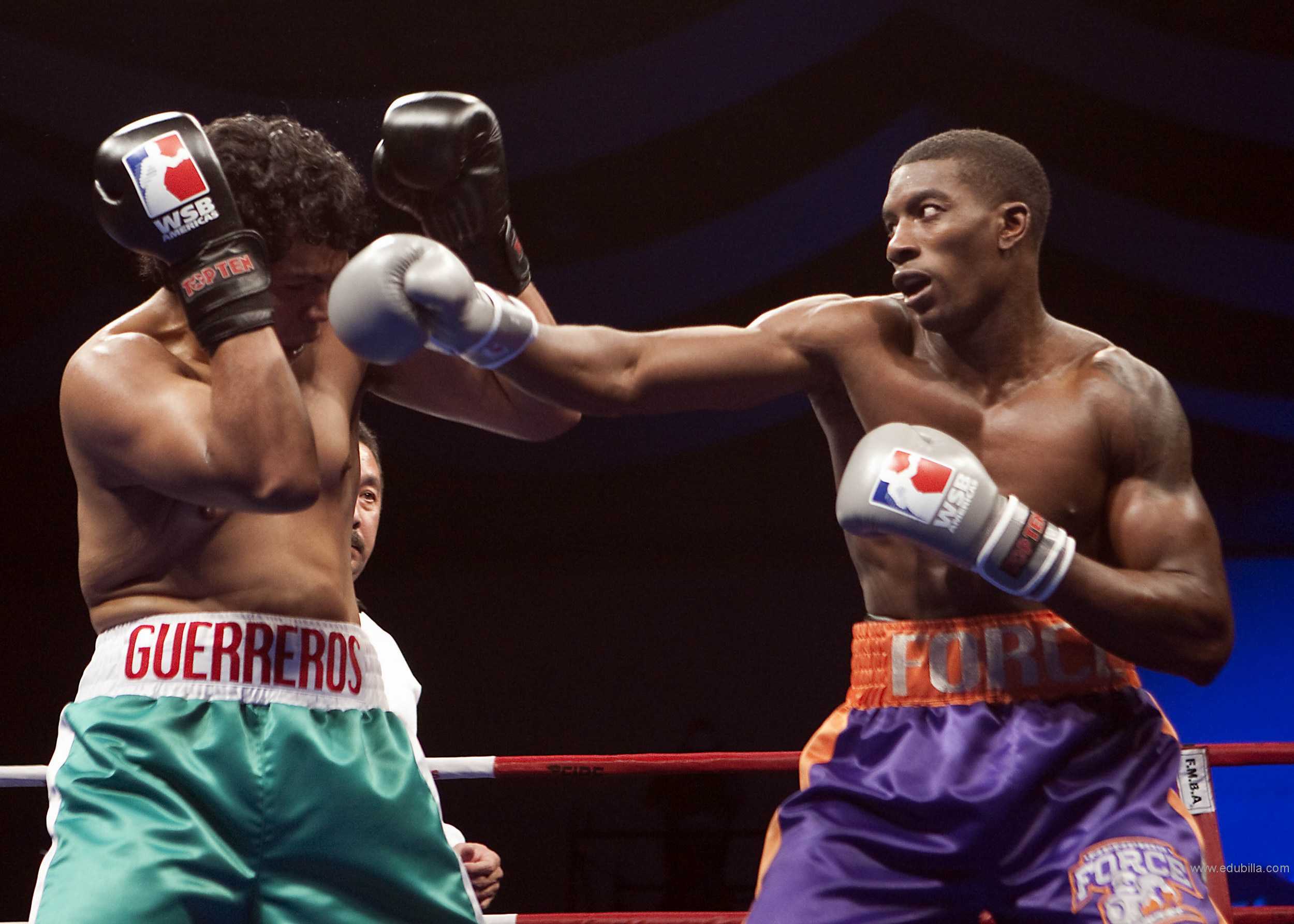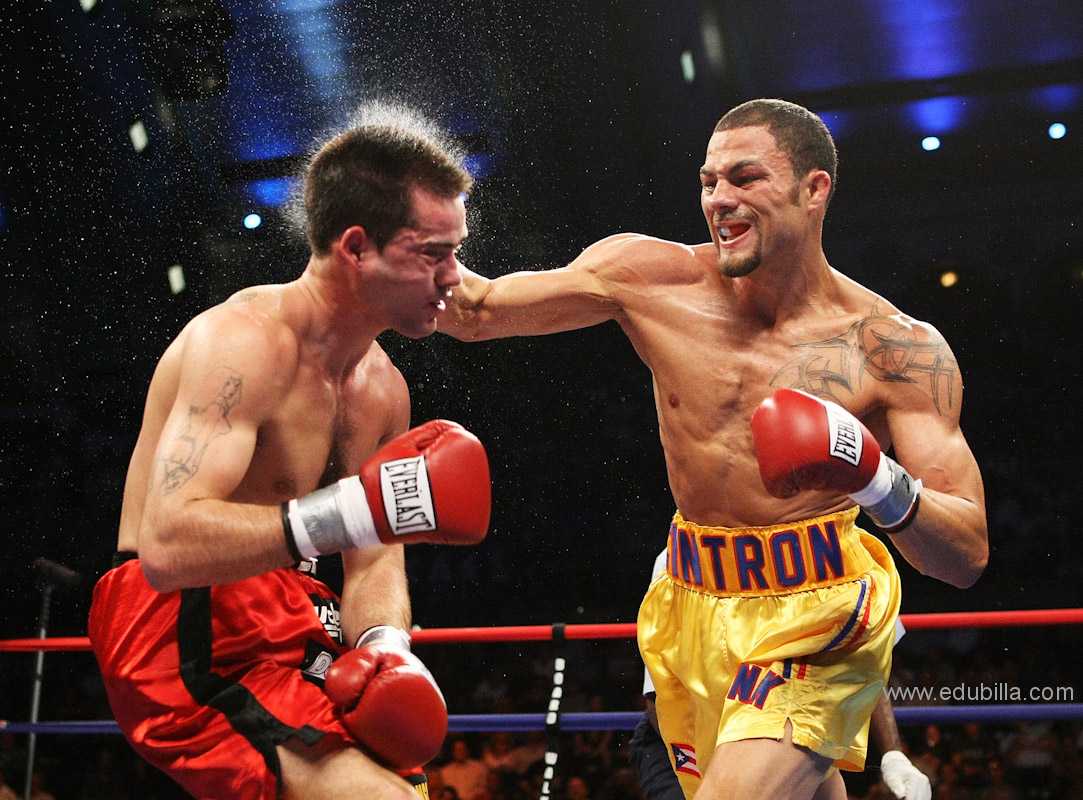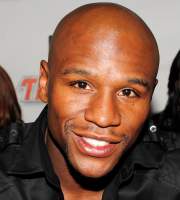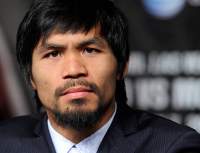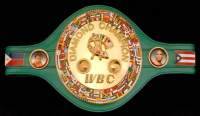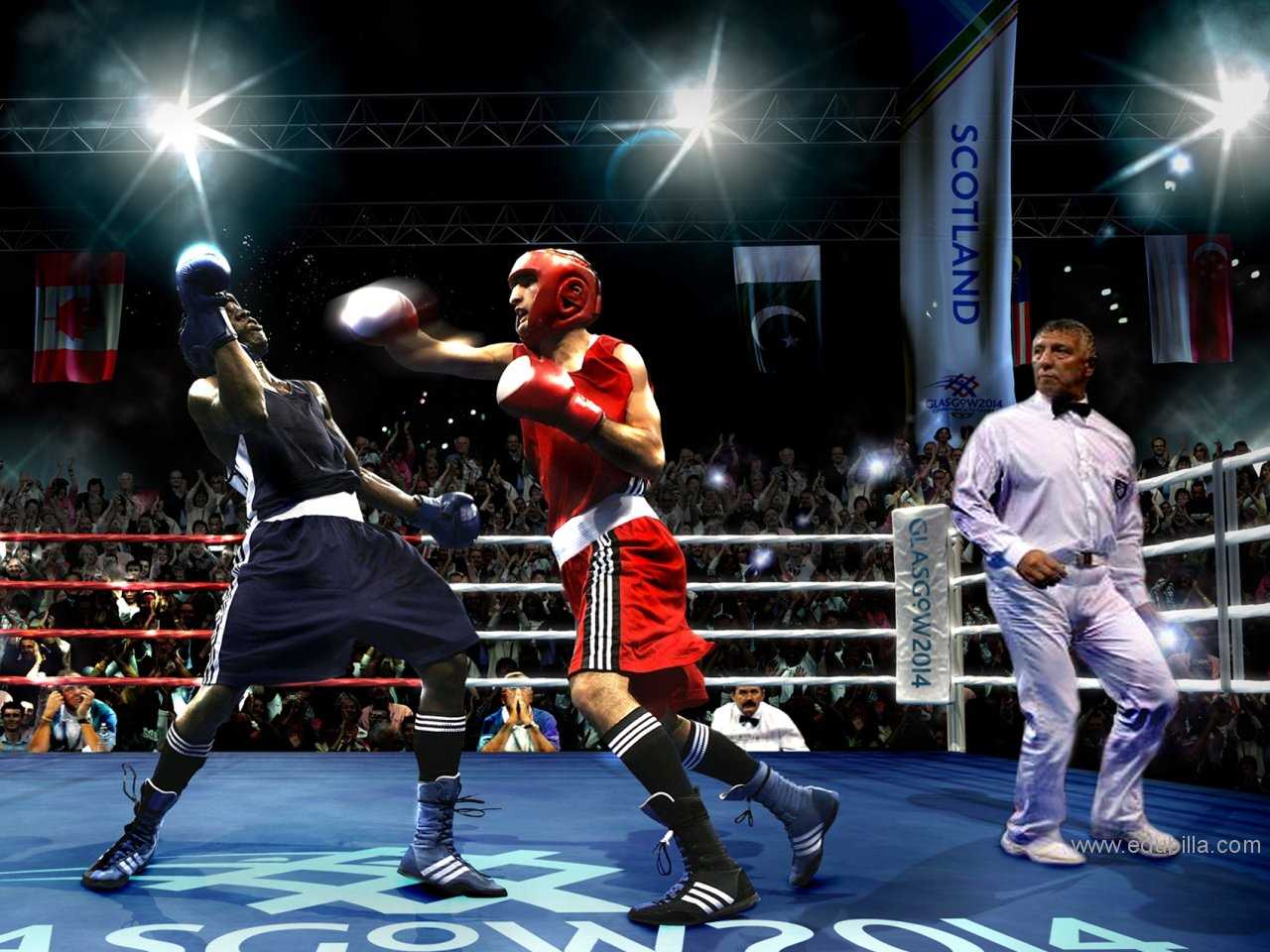
Overview Of Boxing
Boxing, often called "the manly art of self-defense," is a sport in which two competitors try to hit each other with their glove-encased fists while trying to avoid each other's blows. The competition is divided into a specified number of rounds, usually 3 minutes long, with 1-minute rest periods between rounds. Although amateur boxing is widespread, professional boxing has flourished on an even grander scale since the early 18th century.
Boxing is a combat sport in which two people engage in a contest of strength, speed, reflexes, endurance, and will, by throwing punches at each other, usually with gloved hands. Historically, the goals have been to weaken and knock down the opponent.
Amateur boxing is both an Olympic and Commonwealth sport and is a common fixture in most international games—it also has its own World Championships. Boxing is supervised by a referee over a series of one- to three-minute intervals called rounds. The result is decided when an opponent is deemed incapable to continue by a referee, is disqualified for breaking a rule, resigns by throwing in a towel, or is pronounced the winner or loser based on the judges' scorecards at the end of the contest.
While people have fought in hand-to-hand combat since before the dawn of history, the origin of boxing as an organized sport may be its acceptance by the ancient Greeks as an Olympic game in BC 688. Boxing evolved from 16th- and 18th-century prizefights, largely in Great Britain, to the forerunner of modern boxing in the mid-19th century, again initially in Great Britain and later in the United States.
Game Rules
The rules of boxing vary from jurisdiction to jurisdiction, and on whether it is an amateur or professional bout. A violation of the following rules is considered a foul, and can result in a warning, point deduction, or disqualification by the referee:
-You cannot hit below the belt, hold, trip, kick, headbutt, wrestle, bite, spit on, or push your opponent.
-You cannot hit with your head, shoulder, forearm, or elbow.
You cannot hit with an open glove, the inside of the glove, the wrist, the backhand, or the side of the hand.
-You cannot punch your opponent's back, or the back of his head or neck (rabbit punch), or on the kidneys (kidney punch).
-You cannot throw a punch while holding on to the ropes to gain leverage.
-You can't hold your opponent and hit him at the same time, or duck so low that your head is below your opponent's belt line.
-When the referee breaks you from a clinch, you have to take a full step back; you cannot immediately hit your opponent--that's called "hitting on the break" and is illegal.
-You cannot spit out your mouthpiece on purpose to get a rest.
-If you score a knockdown of your opponent, you must go to the farthest neutral corner while the referee makes the count.
-If you "floor" your opponent, you cannot hit him when he's on the canvas.
-A floored boxer has up to ten seconds to get back up on his feet before losing the bout by knockout.
-A boxer who is knocked down cannot be saved by the bell in any round, depending upon the local jurisdiction's rules.
-A boxer who is hit with an accidental low blow has up to five minutes to recover. If s/he cannot continue after five minutes, s/he is considered knocked out.
-If the foul results in an injury that causes the fight to end immediately, the boxer who committed the foul is disqualified.
-If the foul causes an injury but the bout continues, the referee orders the judges to deduct two points from the boxer who caused the injury.
-If an unintentional foul causes the bout to be stopped immediately, the bout is ruled a "no contest" if four rounds have not been fully completed. (If the bout was scheduled for four rounds, then three rounds must have been completed.) If four rounds have been completed, the judges' scorecards are tallied and the fighter who is ahead on points is awarded a technical decision. If the scores are even, it will be called a "technical draw."
-If a boxer is knocked out of the ring, he gets a count of 20 to get back in and on his feet. He cannot be assisted.
-In some jurisdictions the standing eight-count or the three knockdown rule also may be in effect.
-In other jurisdictions, only the referee can stop the bout.
Detailed Boxing Rules Can Be Downloaded From Documents
Equipments Need For Boxing
Apron:
The part of the ring canvas outside the ropes.
Boxing glove:
A padded mitten used in boxing.
Canvas:
The floor of the ring.
Mouthpiece:
A form-fitted appliance placed in a boxer's mouth to protect his teeth and gums; also called a "gumshield".
Headguard:
A protective device worn by boxers which covers most of the head, except the face.
Ring:
An enclosure where boxing takes place.
History Of Boxing
Father of Boxing:
In the coming years, bare-knuckle boxing contests would be held in ampitheatres all over England. Jack Boughton, also known as "the Father of Boxing," developed the first set of rules for the sport and published them in 1743 as a result from a bout where he killed his opponent in 1741.
Jack Broughton:
John "Jack" Broughton (c. 1703 or 5 July 1704 – 8 January 1789) was an English bare-knuckle boxer. He was the first person to ever codify a set of rules to be used in such contests; prior to this the "rules" that existed were very loosely defined and tended to vary from contest to contest. His seven rules of how boxing would be conducted at his amphitheatre (the largest and most influential at that time) evolved later into the London Prize Ring rules which are widely regarded as the foundation stone of the sport that would become boxing, prior to the development of the Marquess of Queensberry rules in the 1860s.
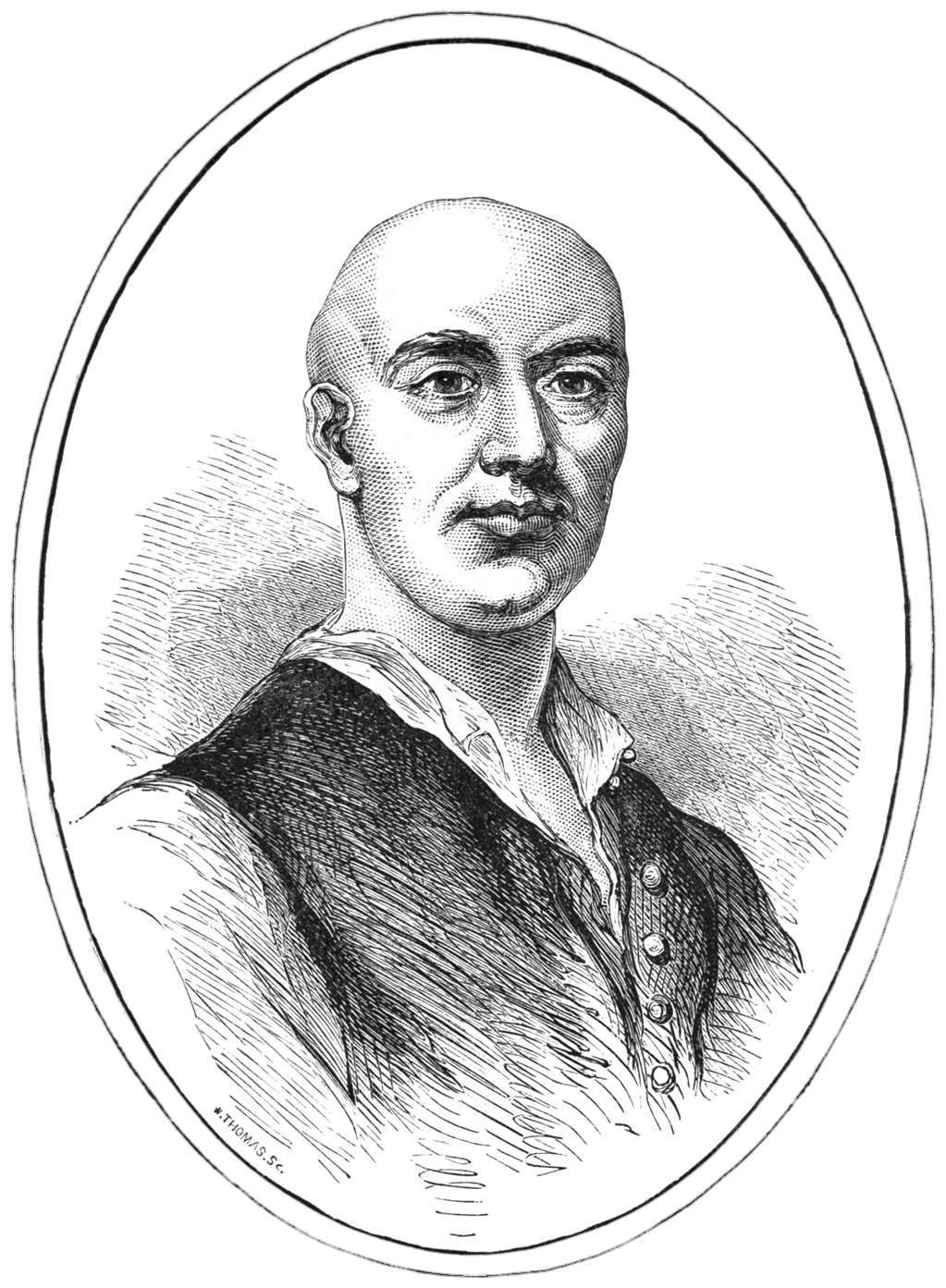
Modern boxing:
Broughton's rules (1743):
Records of Classical boxing activity disappeared after the fall of the Western Roman Empire when the wearing of weapons became common once again and interest in fighting with the fists waned. However, there are detailed records of various fist-fighting sports that were maintained in different cities and provinces of Italy between the 12th and 17th centuries. There was also a sport in ancient Rus called Kulachniy Boy or "Fist Fighting".
London Prize Ring rules (1838):
In 1838, the London Prize Ring rules were codified. Later revised in 1853, they stipulated the following:
Fights occurred in a 24 feet (7.3 m)-square ring surrounded by ropes.
If a fighter were knocked down, he had to rise within 30 seconds under his own power to be allowed to continue.
Biting, headbutting and hitting below the belt were declared illegal.
Marquess of Queensberry rules (1867):
In 1867, the Marquess of Queensberry rules were drafted by John Chambers for amateur championships held at Lillie Bridge in London for Lightweights, Middleweights and Heavyweights. The rules were published under the patronage of the Marquess of Queensberry, whose name has always been associated with them.
Olympic history:
When boxing made its Olympic debut at the 1904 Games in St Louis, it was the USA, the only country entered, which took all the medals. Later, the Americans continued to dominate boxing, winning 109 medals (including 48 gold) out of the 842 up for grabs, closely followed by the Cubans and Russians.
Since its inclusion in the Olympic programme, boxing has been staged at each edition of the Games, except in 1912 in Stockholm, owing to Swedish law, which forbade the practice.
The rules have evolved since the 1980s: 1984 in Los Angeles: protective helmet obligatory; 1992 in Barcelona: set-up of an electronic scoring system to strengthen the objectivity of refereeing; 2007: standardised point scoring.
Women’s boxing will make its debut at the 2012 London Games in London. The current 11 men’s events will be replaced by 10 men’s and 3 women’s events.
Origin Of Boxing
Boxing originated when a person first lifted a fist against another in play. Different eras of the sport have been distinguished by the use or nonuse of fist coverings.The ancient Greeks believed fist fighting was one of the games played by the gods on Olympus; thus it became part of the Olympic Games in about 688 BC.
The earliest known depiction of boxing comes from a Sumerian relief from the 3rd millennium BC.Later depictions from the 2nd millennium BC are found in reliefs from the Mesopotamian nations of Assyria and Babylonia, and in Hittite art from Asia Minor. The earliest evidence for fist fighting with any kind of gloves can be found on Minoan Crete (c. 1500–900 BC), and on Sardinia, if we consider the boxing statues of Prama mountains (c. 2000–1000 BC)
Roman Developments:
Later, in Rome, leather thongs were exchanged for the cestus – a glove studded with metal. Unfortunately this did not help the gladiators involved, as boxing matches of the era usually ended with the death of one or other contestant.
popularity:
Boxing was a popular spectator sport in Ancient Rome. In order for the fighters to protect themselves against their opponents they wrapped leather thongs around their fists. Eventually harder leather was used and the thong soon became a weapon. The Romans even introduced metal studs to the thongs to make the cestus which then led to a more sinister weapon called the myrmex ('limb piercer').
The popularity of boxing continued to spread. It was included in the St. Louis Olympic Games in 1904 for the first time ever. From here on, talented fighters from all over the world would meet and fight for sanctioned titles all throughout the 20th Century and into the 21st.
First Boxing Match:
The first documented "boxing match" took place in 1681 in Britian when the Duke of Albemarle engineered a bout between his butler and his butcher.
First Boxing champion:
The first world heavyweight champion under the Queensberry Rules was "Gentleman Jim" Corbett, who defeated John L. Sullivan in 1892 at the Pelican Athletic Club in New Orleans
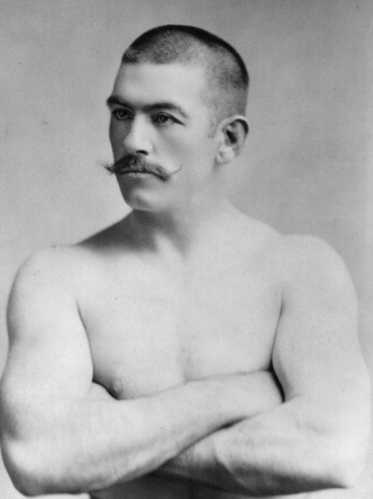
John Lawrence Sullivan (October 12, 1858 – February 2, 1918), also known as the Boston Strong Boy, was recognized as the first Heavyweight Champion of gloved boxing from February 7, 1882, to 1892, and is generally recognized as the last heavyweight champion of bare-knuckle boxing under the London Prize Ring Rules. He was the first American athlete to earn over one million dollars.
Governing Bodies
Governing Bodies:
British Boxing Board of Control:
The British Boxing Board of Control (BBBofC) is the governing body of professional boxing in the United Kingdom. It was formed in 1929 from the old National Sporting Club and is headquartered in Cardiff.
Councils:
The Board divides the country into eight "Area" Councils,
1.Scottish
2Northern Ireland
3.Welsh
4.Northern Area
5.Central Area
6.Southern Area
7.Western Area
8.Midlands Area
Lonsdale Belt:
The Board also sanctions bouts for British boxing's most prestigious title: the Lonsdale Belt. The Lonsdale Belt is awarded to the champion of the United Kingdom in each respective weight class and to win the belt outright it must be defended against a British challenger on at least three separate occasions.
Scoring:
The Board is known for its unique scoring system. Except for title fights (where the bout is scored by three judges, none of whom serve as fight referee), the referee is the sole scorer. After the bout, the referee's decision is handed to the MC and the winner is announced, the referee then raising the arm of the winner, or in the event of a draw both boxers arms.
To Visit BBBofC Click Here.
European Boxing Union:
The European Boxing Union (also popularly known to boxing fans as EBU) is an organization that oversees competition in that sport over the continent of Europe.
History of EBU:
The EBU started life as the (IBU) International Boxing Union in Paris in 1910. The IBU became the EBU in 1946.
During most of the 20th century, and, specially, during that era's first decades, the EBU recognized many world title fights. The European Boxing Union competed against the American based National Boxing Association (NBA), which staged the more widely recognized world title fights.
To Visit EBU Click Here.
National Boxing Association:
In 1963, the National Boxing Association became the World Boxing Association (WBA). Also in 1963, the WBC was formed when the president of Mexico, Adolfo López Mateos, invited the New York State Athletic Commission, the EBU, the BBBofC, and national sanctioning organizations of dozens of other countries, to form the WBC. The NBA (formed as a rival to the NYSAC) became the WBA in response to NYSAC and all the other major sanctioning bodies (USA-NYSAC, Argentina, England, France, Mexico, Philippines, Panama, Chile, Peru, Venezuela, and Brazil) forming the WBC. The EBU's personnel ultimately decided to recognize regional title bouts instead.
Rules:
The EBU follows certain rules, but most rules in EBU bouts obey the rules set by the independent boxing commission of the country where an EBU fight will be held at. Some of the EBU rules are that a fighter must not be younger than 20 years of age when fighting for an EBU championship, and that hotel accommodation for boxers, referees and European Boxing Union officials visiting a country for an EBU fight must be paid by the fight's promoter. The EBU does, however, pay for the air or train tickets of referees and officials that travel away from home for an EBU fight. Other rules are also imposed on EBU recognized events, but not many of the EBU rules interfere with the fighting rules to be followed during the fight itself.
To Visit EBU Click Here.
Nevada Athletic Commission:
The Nevada Athletic Commission (popularly known as the Nevada State Athletic Commission or NSAC) regulates all contests and exhibitions of unarmed combat within the state of Nevada, including licensure and supervision of promoters, boxers, kickboxers, mixed martial arts fighters, seconds, ring officials, managers, and matchmakers. The commission is the final authority on licensing matters, having the ability to approve, deny, revoke, or suspend all licenses for unarmed combat. Because of Nevada's role as a center for combat sports, the NSAC is regarded as the preeminent state athletic commission in the United States.
Mission Statement:
In 1941, the Nevada Athletic Commission was established by an act of the Nevada legislature. Since that time, the Commission has regulated professional unarmed combat (e.g., boxing, kickboxing and mixed martial arts/ MMA) in Nevada. The conduct and regulation of unarmed combat in Nevada are governed by NRS Chapter 467, and are further clarified by the Regulations of the Commission (Chapter 467 of the Nevada Administrative Code). The Commission administers the State laws and regulations governing unarmed combat for the protection of the public and to ensure the health and safety of the contestants.
To Visit NSAC Click Here.
Sanctioning Bodies:
International Boxing Federation(IBF):
The International Boxing Federation or IBF is one of four major organizations recognized by the IBHOF which sanction world championship boxing bouts, alongside the WBA, WBC and WBO.
History of IBF:
The IBF is preceded by the United States Boxing Association (USBA), a regional championships organization like the North American Boxing Federation (NABF), North American Boxing Council (NABC) and the North American Boxing Association (NABA). In 1983, at the WBA's annual convention, held in Puerto Rico that year, Bob Lee, president of the USBA, lost in his bid to become WBA president against Gilberto Mendoza. Lee and others withdrew from the convention after the election, and decided to organize a new world-level organization. At first, the new group was named the USBA-International. They decided to base the new organization in New Jersey, where its main offices are still located.
IBF's First World Champion:
The IBF's first world champion was Marvin Camel, a former WBC world Cruiserweight champion who won the IBF's belt in the same division. During its first year of existence, however, the IBF remained largely obscure. But by 1984, the IBF decided to recognize Larry Holmes, Aaron Pryor, Marvin Hagler and Donald Curry, already established champions from other organizations, as IBF world champions. In Holmes' case, he relinquished his WBC title to accept the IBF's recognition. It established the IBF as the "third" sanctioning body, and a legitimate organization.
To Visit IBF Click Here.
World Boxing Association(WBA):
The World Boxing Association (WBA) is an international boxing organization that sanctions official matches, and awards the WBA world championship title at the professional level. Founded in the United States in 1921 by thirteen state representatives as the National Boxing Association, in 1962 it changed its name in recognition of boxing's growing popularity worldwide, and began to gain other nations as members.
By 1975 a majority of votes were held by Latin American nations, and the organization headquarters were moved to Panama. After being located during the 1990s and early 2000s in Venezuela, in 2007 the organization offices returned to Panama. It is the oldest of the four major organizations recognized by IBHOF which sanction world championship boxing bouts, alongside the International Boxing Federation, the World Boxing Council and the World Boxing Organization.
Motto:Simply the pioneers
President:Gilberto Mendoza
History of WBA:
The original sanctioning body of professional boxing, the World Boxing Association can be traced back to the original National Boxing Association, organized in 1921 in the United States. The first bout it recognized was the Jack Dempsey-Georges Carpentier Heavyweight Championship bout in New Jersey.
The NBA was formed by representatives from thirteen American states, including Sam Milner to counterbalance the influence that the New York State Athletic Commission (NYSAC) wielded in the boxing world. The NBA and the NYSAC sometimes crowned different world champions in the same division, leading to confusion about who was the real champion.
To Visit WBA Click Here.
World Boxing Council:
The World Boxing Council or WBC is one of four major organizations recognized by the IBHOF which sanction world championship boxing bouts, alongside the IBF, WBA and WBO.
History of WBC:
It was initially established by 11 countries: the United States, Puerto Rico, Argentina, United Kingdom, France, Mexico, Philippines, Panama, Chile, Peru, Venezuela and Brazil. Representatives met in Mexico City on February 14, 1963, upon invitation of Adolfo López Mateos, then President of Mexico, to form an international organization to unify all commissions of the world to control the expansion of boxing.
The groups that historically had recognized several boxers as champions included the New York State Athletic Commission, the National Boxing Association of the United States, the European Boxing Union and the British Boxing Board of Control, but for the most part, these groups lacked the all-encompassing "international" status they claimed.
To Visit WBC Click Here.
World Boxing Organization(WBO):
The World Boxing Organization (WBO) is a sanctioning organization currently recognizing professional boxing world champions. The organization is recognized as one of the four major world championship groups by the IBHOF alongside the International Boxing Federation, the World Boxing Council and the World Boxing Association. WBO offices are located in San Juan, Puerto Rico.
To Visit WBO Click Here.
Amateur:
International Boxing Association (amateur):
The International Boxing Association, originally the Association Internationale de Boxe Amateur and still referred to as the AIBA is a sport organization that sanctions amateur (Olympic-style) boxing matches and awards world and subordinate championships. Recently, AIBA has been trying to build its own professional version of boxing, where boxers would retain their Olympic eligibility, through the team tournament league known as World Series of Boxing and planned AIBA Pro Boxing
To Visit AIBA Click Here.
Awards Related To Boxing
GB National Boxing Awards:
The Awards are an introduction to the sport of amateur boxing as a game of skill, discipline, respect and self control. It teaches the importance of a healthy lifestyle and has been designed as a fun recreational programme for all participants at all levels, ages and abilities.
The Awards are broken down into 6 levels:
-Preliminary Award
-Standard Award
-Bronze Award
-Silver Award
-Gold Award
-Platinum Award
The first 3 Awards (Preliminary, Standard and Bronze) are all non-contact and can be used in Boxing Clubs for new members and also any non-specialist facility such as a community hall or school gym. The non contact part of the awards may be taught by stand alone GB Boxing Tutor (School Teacher, Youth worker, Sports Development Officers). As these cover the basics of boxing.
The remaining 3 Awards (Silver, Gold and Platinum) Awards involve technique development in modified conditioned sparring and need to be coached in a boxing club with a boxing ring and qualified ABA coach.
Al Buck Award:
The Al Buck Award, known alternatively as the Boxing Writers of America Manager of the Year Award, has been conferred annually since 1967 by the Boxing Writers Association of America on the manager, irrespective of nationality or class of fighter represented, adjudged by the membership of the Association to have been the best in boxing in a given year.
Named for Al Buck, an American sportswriter, long of The Ring, the award is presented with other honors given by the BWAA at an annual awards dinner held in the spring of the year following that for performance in which the award is given.
Best Boxer ESPY Award:
The Best Boxer ESPY Award was presented annually between 1993 and 2006 to the professional or amateur boxer,irrespective of nationality, adjudged to be the best in a given calendar year. The award was subsumed in 2007 by the Best Fighter ESPY Award, for which both boxers and mixed martial arts fighters are eligible.
Between 1993 and 2004, the award voting panel comprised variously fans; sportswriters and broadcasters, sports executives, and ESPN personalities, termed collectively experts; and retired sportspersons, but balloting thereafter was exclusively by fans over the Internet from amongst choices selected by the ESPN Select Nominating Committee.
Through the 2001 iteration of the ESPY Awards, ceremonies were conducted in February of each year to honor achievements over the previous calendar year; awards presented thereafter were conferred in June and reflected performance from the June previous
Best Fighter ESPY Award:
The Best Fighter ESPY Award (ESPY means Excellence in Sports Performance Yearly) was created by the cable television network ESPN and has been presented annually since 2007 to the professional or amateur boxer or mixed martial arts fighter, irrespective of nationality, gender, weight class, or sanctioning body or league, adjudged to be the best in a given calendar year. The award subsumed the Best Boxer ESPY Award, limited exclusively to boxers, which was presented between 1993 and 2006, inclusive.
Balloting for the award is undertaken by fans over the Internet from between three and five choices selected by the ESPN Select Nominating Committee, and the award is conferred in July to reflect performance and achievement over the preceding twelve months.
Championship belt:
A championship belt is a large, extravagantly designed belt used primarily in combat sports such as boxing, mixed martial arts and professional wrestling to signify the champions of the promotion or company, much like a cup or trophy in other sports. There are several companies in the business of constructing championship belts.
Fight of the Year:
Fight of the Year is an award given to the boxing match considered to be the best fight that year. It is awarded by a variety of different institutions. It may refer to:
-Ring magazine Fight of the Year – awarded by The Ring magazine
-Harry Markson Award – the Boxing Writers Association of America's fight of the year
Futch–Condon Award:
The Eddie Futch-John F.X. Condon Award, commonly referred to as the Futch–Condon Award and known alternatively as the Boxing Writers Association of America Trainer of the Year Award, has been conferred annually since 1989 by the Boxing Writers Association of America on the trainer, irrespective of nationality or gender, adjudged by the membership of the Association to have been the best in boxing in a given year.
Harry Markson Award:
The "Ali-Frazier Award" (formerly known as the "Harry Markson Award") is given annually to the fighters who compete in the Boxing Writers Association of America's Fight of the Year. The award has been conferred annually since the BWAA's awards dinner in 2003. The BWAA votes on the best fight of each year regardless of the weight class or nationality of the fighters.
The award was originally named for Harry Markson, a boxing promoter and publicist who served for five years as the president of boxing operations at Madison Square Garden. The 2009 award was renamed the "Ali-Frazier Award" in honor of Muhammad Ali and Joe Frazier and their epic fight trilogy. The award is presented with other honors given by the BWAA at an annual awards dinner.
Lonsdale Belt:
The Lonsdale Belt was a boxing prize introduced by Hugh Lowther, 5th Earl of Lonsdale, to be awarded to British boxing champions. It is still awarded to British champions today.
Ring Magazine comeback of the year
Ring Magazine event of the year
Ring magazine Fight of the Year
Ring magazine Fighter of the Year
Ring magazine Knockout of the Year
Ring Magazine Light Heavyweight Champion
Ring Magazine pound for pound
Ring Magazine progress of the year
Ring Magazine prospect of the year
Ring Magazine round of the year
Ring Magazine upsets of the year
Sam Taub Award:
The Sam Taub Award is a yearly award presented by the Boxing Writers Association of America for Excellence in Broadcasting Journalism. The award is named after Sam Taub, a journalist and radio broadcaster who is best known for his work covering boxing. It is similar to Major League Baseball's Ford C. Frick Award.
Sugar Ray Robinson Award:
The "Sugar Ray Robinson Award" (previously known as the Edward J. Neil Trophy) is given to the Boxing Writers Association of America's Fighter of the Year. The BWAA first presented the trophy in 1938. The original purpose of the trophy was to recognize "an individual who did the most for boxing in the previous year." Over time, the award went strictly to the best fighter of each year as decided by the BWAA. The members of the BWAA vote to decide the best boxer each year regardless of weight class or nationality.
The award was previously named for Edward J. Neil, an Associated Press sportswriter and war correspondent who was killed in 1938 while reporting on the Spanish Civil War.The 2009 award was renamed after boxing great Sugar Ray Robinson. The "Fighter of the Year" award is presented with other honors given by the BWAA at an annual awards dinner.
Val Barker Trophy:
The Val Barker Trophy, named for boxer Val Barker, is presented every four years to an Olympic boxing athlete who exemplifies style during competition.In theory, the award goes to the top "pound-for-pound" boxer in the Olympics.
Sample Documents Of Boxing
-Muhammad Ali

